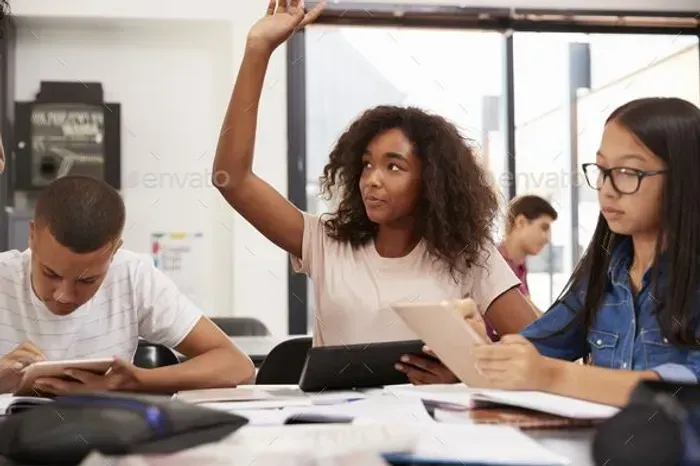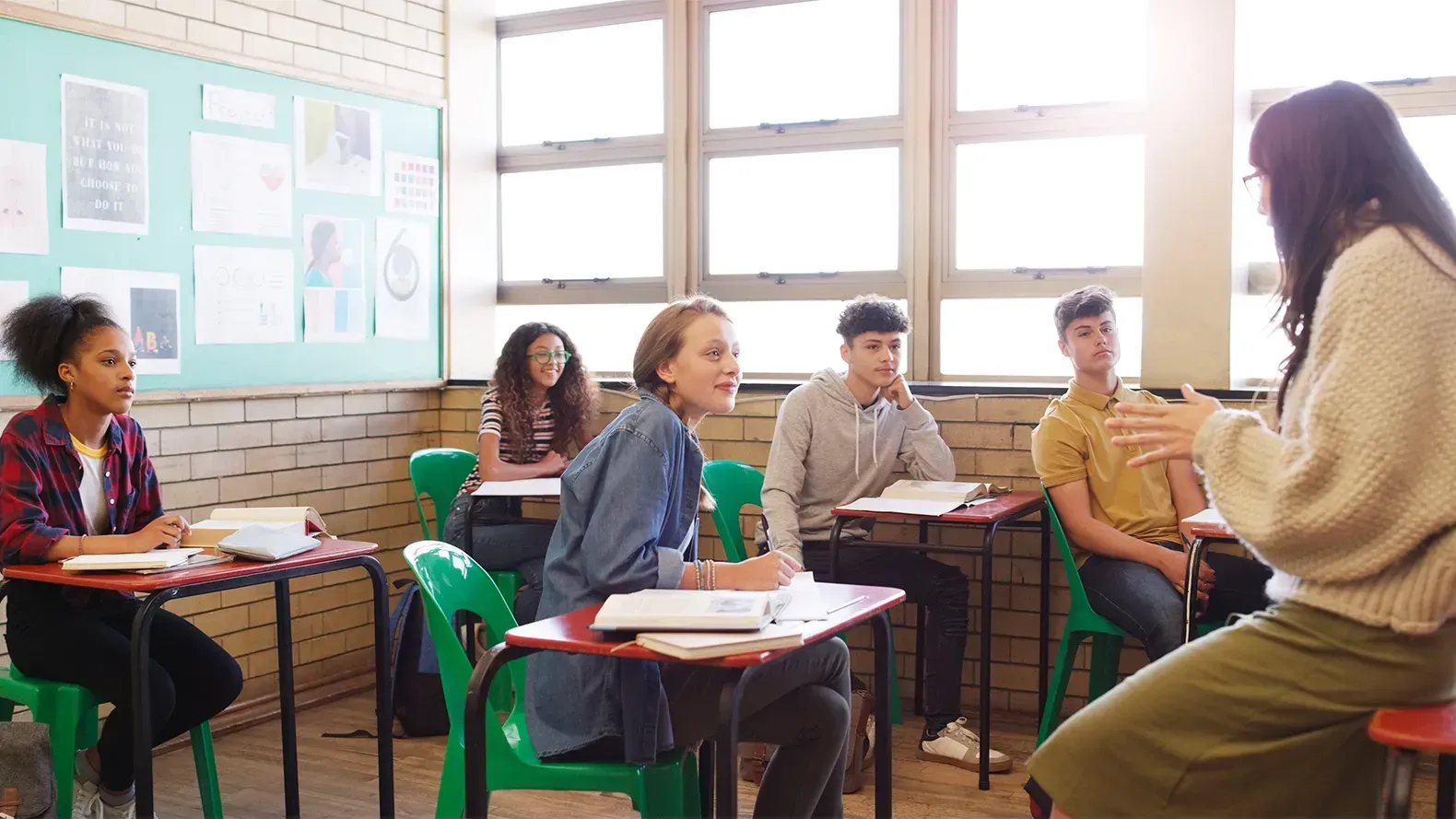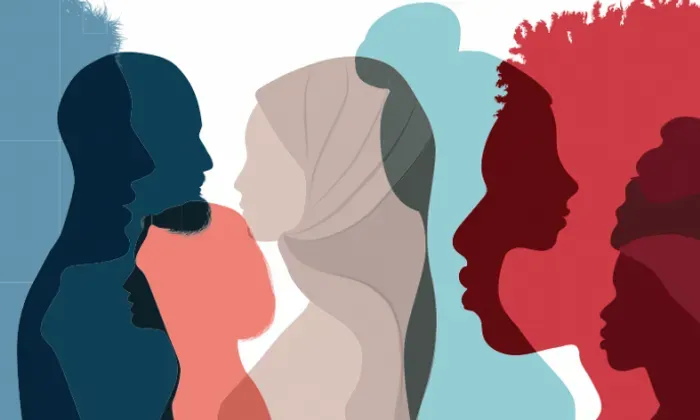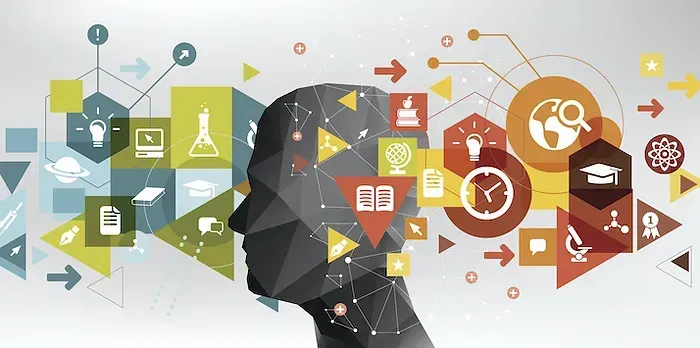Creative Collisions and the Intersection Between Education and Innovation

“If you have an apple and I have an apple and we exchange these apples then you and I will still each have one apple. But if you have an idea and I have an idea and we exchange these ideas, then each of us will have two ideas.”
~ George Bernard Shaw
Informal collaboration in the workplace is most often associated with the water cooler effect. The water cooler effect is when employees interact with one another socially, usually while taking a break, grabbing a cup of coffee, or getting a drink from the office water cooler. During these impromptu, face-to-face meetings, employees form relationships and deepen social bonds, which according to research from MIT, can increase their overall productivity and job satisfaction by 10-15%. Additionally, these chance encounters may lead to conversations that facilitate collisions between ideas that result in inspiration, innovative thinking, and new approaches.
In physics, a collision is defined as the sudden, forceful coming together in direct contact of two bodies for a very short period in which the momentum and energy of the colliding masses change. In the vernacular, we use the word collision to describe when two objects crash into each other. In addition to the more traditional uses of the word, collisions can also explain the impact of disparate ideas, resulting in new and innovative concepts. These impacts are referred to as “creative collisions.” Enrique Rubio, the founder of Hacking HR, points out that creative collisions are “the result of heated debates and discussions among people who have different perspectives about how to solve certain issues or create new opportunities.” In other words, creative collisions could lead to novel, outside-of-the-box thinking and innovations that could generate the next big idea. As Matt Ridley writes in The Rational Optimist: How Prosperity Evolves, “It is the ever-increasing exchange of ideas that causes the ever-increasing rate of innovation in the modern world.” As a consequence of social interaction, innovation pushes against conventional wisdom that some of the greatest inventions and innovations were created in “eureka” moments by solitary individuals tinkering in their garages or isolated laboratories. This could not be further from the truth. The fact is that all innovations are the result of intersections where ideas have had a chance to collide, incubate and flower. Tony Hsieh, the late founder of Zappos, understood this principle and put it into practical application in downtown Las Vegas.
Tony Hsieh was a visionary entrepreneur and venture capitalist who helped found Zappos in 1999 and served as its CEO until 2020. In 2013, Hsieh relocated Zappos from its headquarters in Henderson, Nevada, to the old downtown Las Vegas City Hall situated in the Freemont East Entertainment District. Downtown Las Vegas at the time was mostly a blighted and neglected space that had fallen into economic despair. And even though downtown Las Vegas had seen better days, Hsieh had a unique vision to revitalize the area and began the Downtown Project, or as it is known today, the DTP. Hsieh envisioned the DTP as a community of small businesses and creatives supporting one another by creating a milieu that fostered innovation, inspiration, entrepreneurial energy, creativity, and upward mobility. Through an initial investment of 350 million dollars, mostly his own money, Hsieh saw the downtown area as a “city as a start-up” and facilitated improvements in real estate, small businesses, tech, education, arts, and culture.
Informed by Edward Glaeser’s book, Triumph of the City, Hsieh created the DTP based on the three C’s of Collisions, co-learning, and connectedness. Collision results from serendipitous meetings of people that happen when they are in the right place at the right time. These chance encounters may start new relationships that blossom into downstream impact. Co-learning is when people in the community teach each other. This includes mentoring and helping people as members of a community of learners. Finally, connectedness is the number and depth of connected relationships in a given space. The DTP facilitates creative collisions by designing comfortable workspaces ideal for working lunches, team meetings, or individuals who want to take a break in one of its numerous bars, cafes, or shared spaces such as the Downtown Container Park or the John E. Carson building’s central courtyard. These spaces allow people to socialize and serendipitously collide, resulting in a cross-pollination of ideas and creative collisions.
Designing areas to facilitate creative collisions is not just relegated to business startups and can be seen in educational spaces as well—for example, the pioneering architectural team of Michael Manfredi and Marion Weiss. Manfredi/Weiss created The Bridge now known as the Tata Innovation Center at Cornell Tech in Manhattan, New York. The Tata Innovation Center is a first-of-its-kind seven-story loft designed to connect university researchers to tech companies, startups, and venture capitalists by creating common spaces that encourage random interactions and collaboration. The pair explained that “Innovation is no longer a solitary pursuit. Rather, it occurs at the interstices between different specializations, and, in fact, the most interesting mysteries lie at the intersection of multiple disciplines.”
Disrupters in the K-12 educational space have reimagined what schools can look like by manipulating school designs to facilitate creative collaboration, which research suggests can also increase student achievement. For example, a 2015 study on classroom design conducted by Peter Barrett, emeritus professor at the University of Salford in the United Kingdom, found that variations in the classroom’s physical characteristics, what he called “clever classrooms,” can account for 16% of learning progress. Nathan Strenge, Senior Learning Designer at Fielding International, refers to innovations in school design as “thriving paradigms.” Some examples of thriving paradigms include diverse and adaptive spaces that produce a fluid environment of connected, agile learning spaces. Designing schools in this way will facilitate a community-based approach to learning where students can build relationships with peers, teachers, administrators, and community stakeholders. Further, utilizing innovative furniture and fixtures will allow movement and choice and increase students’ ability to collaborate and share ideas. Additionally, hallways, which are about 30% of a school’s total area, are transformed from circulation areas to collaborative learning spaces complete with embedded learning zones.
Hsieh’s untimely death in November 2020 cut short the life of one of Las Vegas’s most innovative entrepreneurs. But his vision of creating interconnected spaces where serendipitous meetings could result in creative collisions lives on. We in the educational space could learn a lot from Hsieh, as the modern technology-based economy requires students to think innovatively and creatively. Designing schools to facilitate these essential skills will increase students’ academic performance and help students become comfortable working in collaborative environments, where creative collisions could lead to unorthodox thinking and novel approaches.
I would love to hear what you thought was useful or valuable in this blog post, please feel free to comment.










